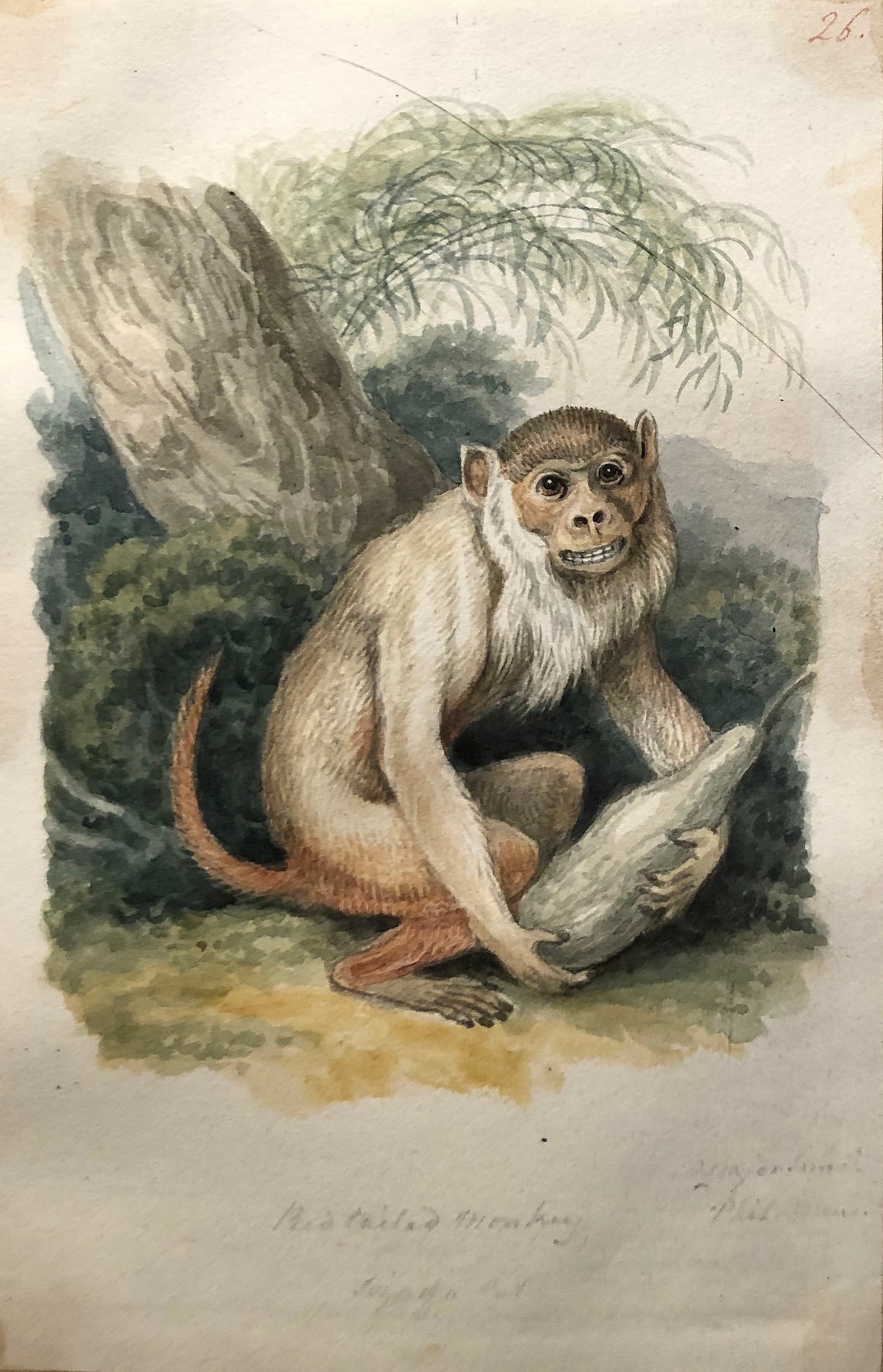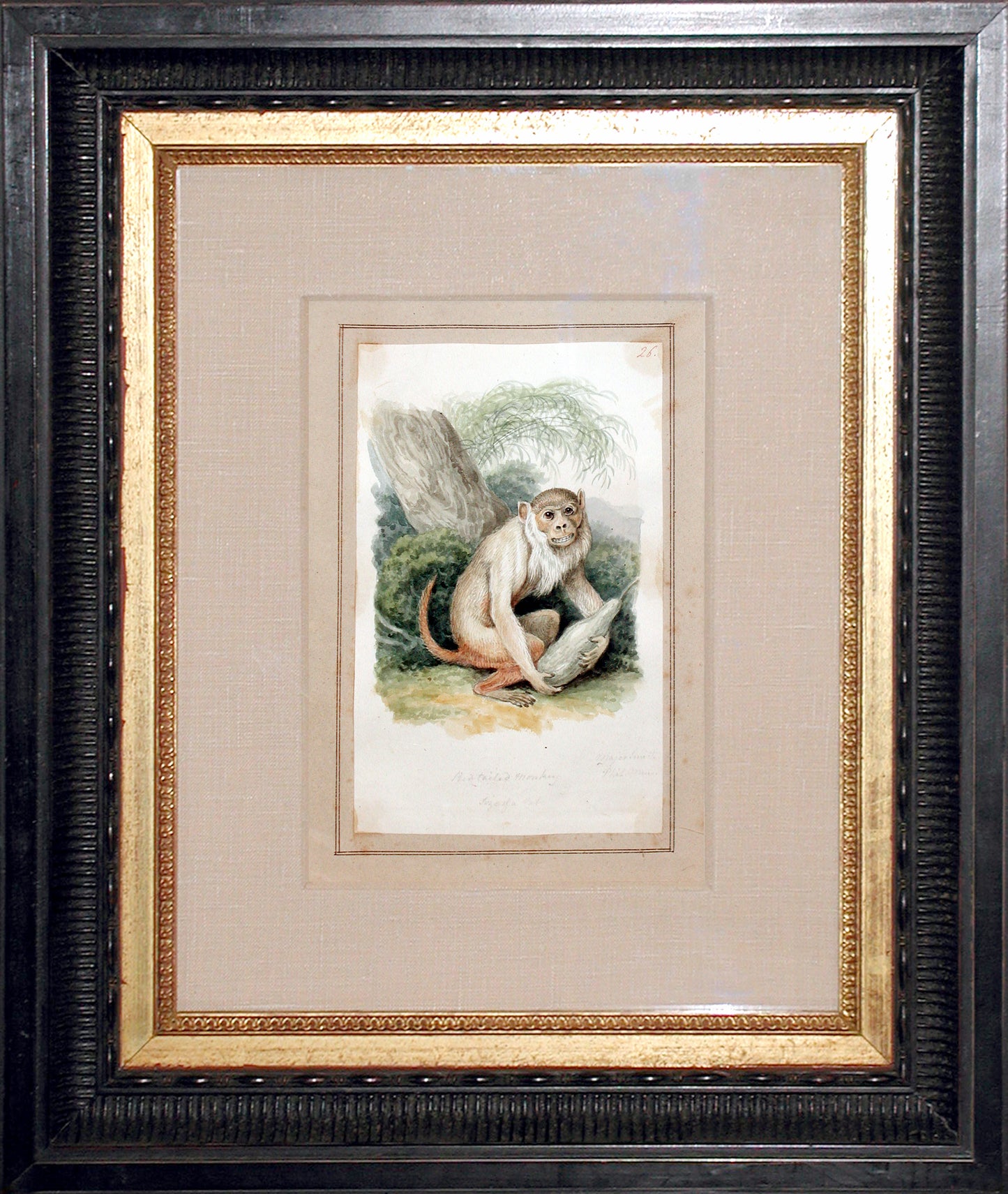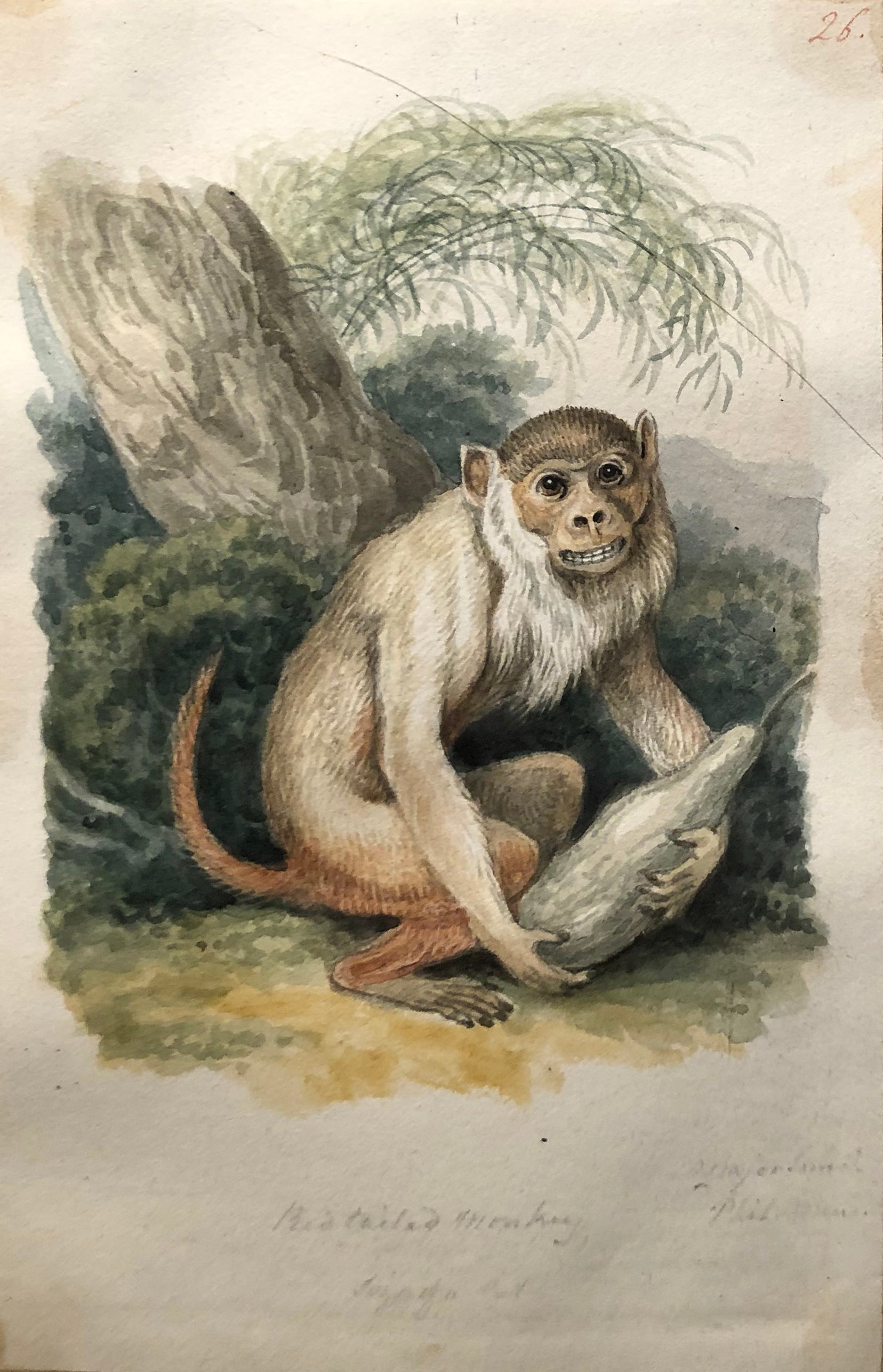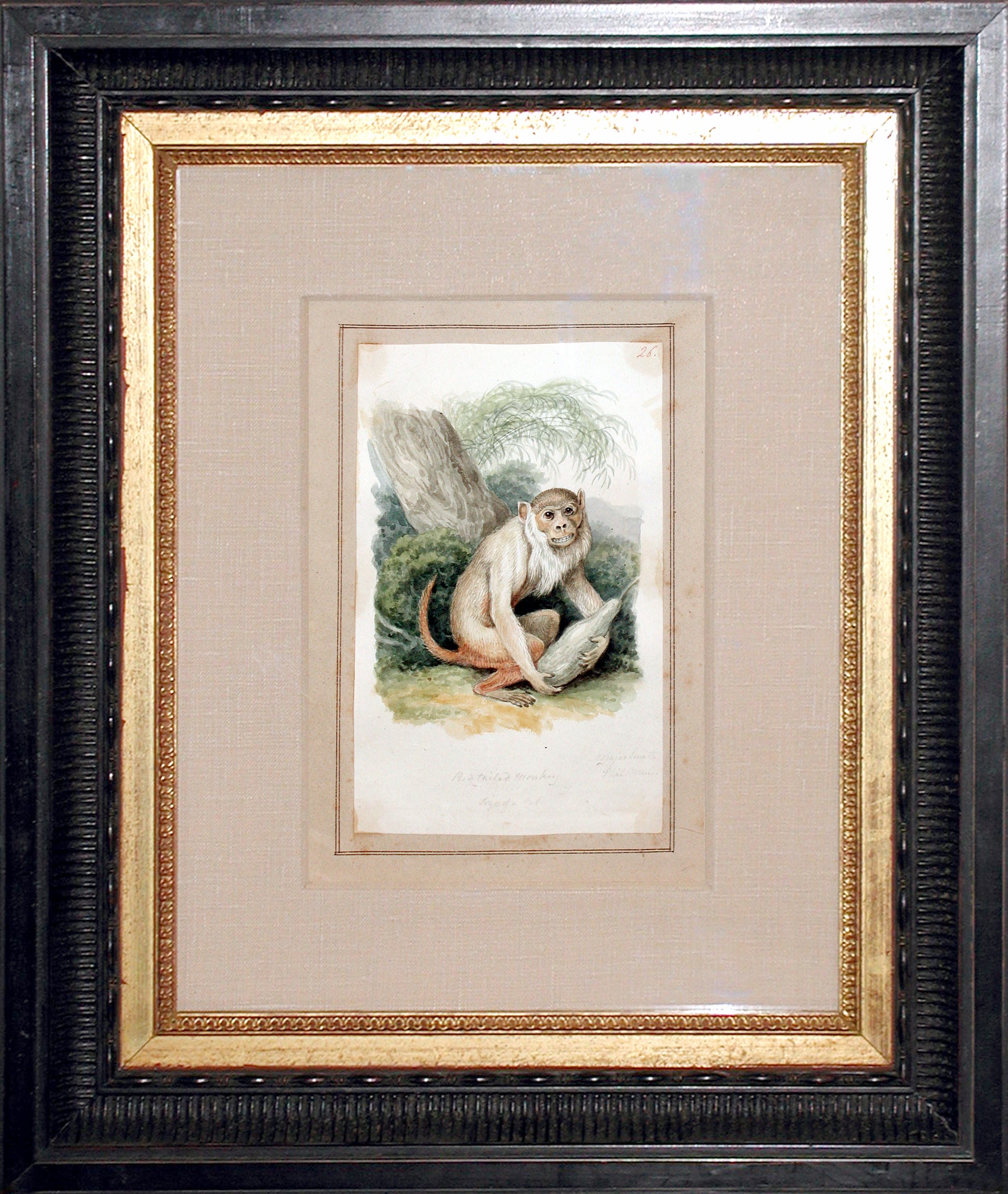from: The Finest Corpus of 18th and 19th century Watercolors Relating to South America Extant
SAMUEL HOWITT (BRITISH, 1765-1822) Red-tailed Monkey. Size of a Cat.
SAMUEL HOWITT (BRITISH, 1765-1822) Red-tailed Monkey. Size of a Cat.
Couldn't load pickup availability
SAMUEL HOWITT (BRITISH, 1765-1822)
Red-tailed Monkey. Size of a Cat.
Watercolor and pencil on paper
Signed ‘Howitt’ l.r.
Paper size: 7 1/4 x 4 1/2 in. Frame size: 17 3/4 x 15 in.
Provenance: Collection of Walter Faulkes, Fearnley Hall.
Red-tailed Monkeys (Cercopithecus ascanius)
Found in: Angola, Cameroon, Central African Republic, Democratic Republic of the Congo, Kenya, Rwanda, South Sudan, Tanzania, Uganda, Zambia, and possibly Burundi.
Red-tailed monkeys, about the size of a domestic cat, are primarily diurnal—most active during the early morning and evening hours. They play a vital ecological role as seed dispersers, collecting fruits and other food items which they often store in their cheek pouches. This unique adaptation allows them to forage in one location and safely consume their food elsewhere, minimizing the risk of theft from other animals.
Communication among red-tailed monkeys is rich and varied. They use vocalizations, physical gestures, and visual signals to convey information. These behaviors express social hierarchy, submission, dominance, and greeting rituals, all of which reinforce group cohesion within their social structures.
SAMUEL HOWITT (BRITISH, 1765–1822)
Samuel Howitt, a country gentleman from Chigwell, Essex, turned to art to mitigate financial difficulties brought on by a lavish lifestyle. Despite a Quaker upbringing, he embraced the spirited social world of London, often found in the company of his brother-in-law, the caricaturist Thomas Rowlandson. His love of sport—hunting, fishing, and gambling—ultimately eclipsed his domestic life, contributing to the dissolution of his marriage.
Though his early work was unrefined, Howitt’s skill developed rapidly into a distinctive style marked by quick, lively outlines, echoing Rowlandson’s influence. Between 1783 and 1815, he exhibited regularly at the Royal Academy and contributed to popular sporting publications, including The Angler’s Manual and The British Sportsman. Working in both oil and watercolor, he became known for his animated and engaging compositions.
Howitt’s most renowned publication, Oriental Field Sports, featured 40 aquatints based on Captain Thomas Williamson’s sketches from India, vividly portraying game hunting on the subcontinent. His commitment to realism extended to animal studies conducted at the Tower of London, which informed his A New Work of Animals (1811), a series rooted in Aesop’s fables.
Today, a companion album of his drawings resides in the Natural History Museum, London, part of Baron Rothschild’s esteemed collection. Rothschild, an amateur scientist and avid natural history collector, helped elevate Howitt’s legacy as a leading illustrator of the late 18th and early 19th centuries.




